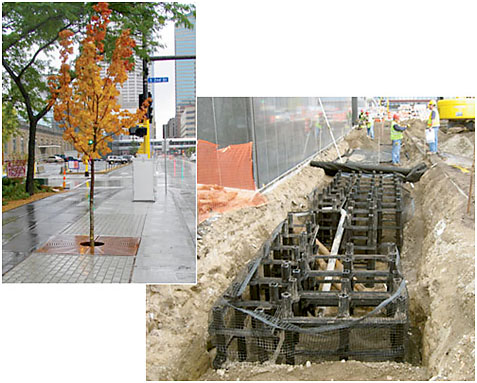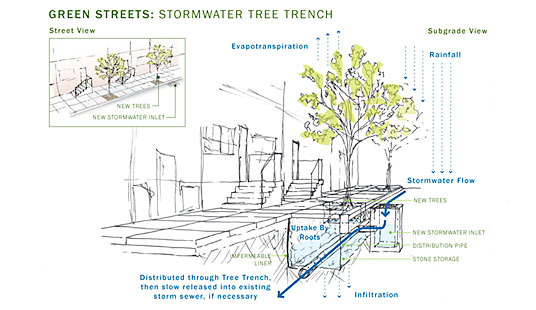Erosion Control Toolbox: Sidewalk Stormwater Tree Trench
Introduction

Tree Trench. Photo Source: Architectural Record

Tree Trench Schematic. Source: Philadelphia Water Department, Green Stormwater Infrastructure Tools
Another space saving LID solution to manage street stormwater runoff is the sidewalk stormwater tree trench. On the surface it looks like an ordinary sidewalk with trees planted in tree wells. Below the surface, structural soils, gravel, and/or modular structural cells form a continuous trench that stores and infiltrates stormwater. Landscape Architects must work closely with their Project Development Team to identify opportunities to include sidewalk stormwater tree trenches.
Stormwater from the street is diverted to the trench through curb-cuts. Runoff from sidewalks can be diverted to the trench through permeable pavers between tree wells. If the capacity of the trench is exceeded, runoff can be directed to bypass the trench and flow into an existing storm drainage system.
In addition to detaining and infiltrating stormwater runoff below grade, the stormwater tree trench provides much better growing conditions for street trees than conventional tree wells. Tree roots have access to air and water stored in open pore spaces in the soil and gravel in the continuous trench. The canopies of street trees reduce stormwater flow intensities by intercepting and slowing down rainfall. Evapotranspiration (water evaporated through leaf surfaces) further reduces the volume of stormwater stored below grade.
Updated June 28, 2018

